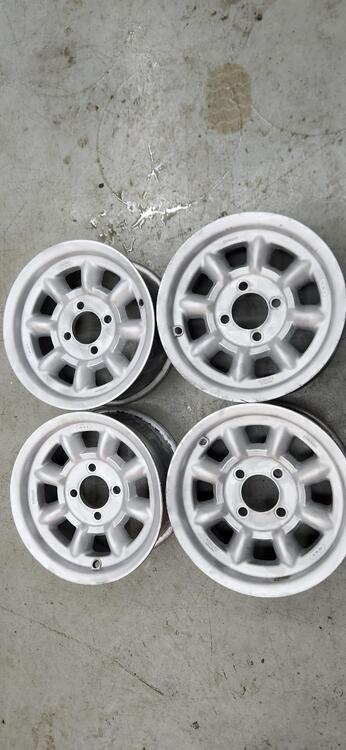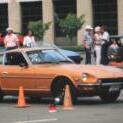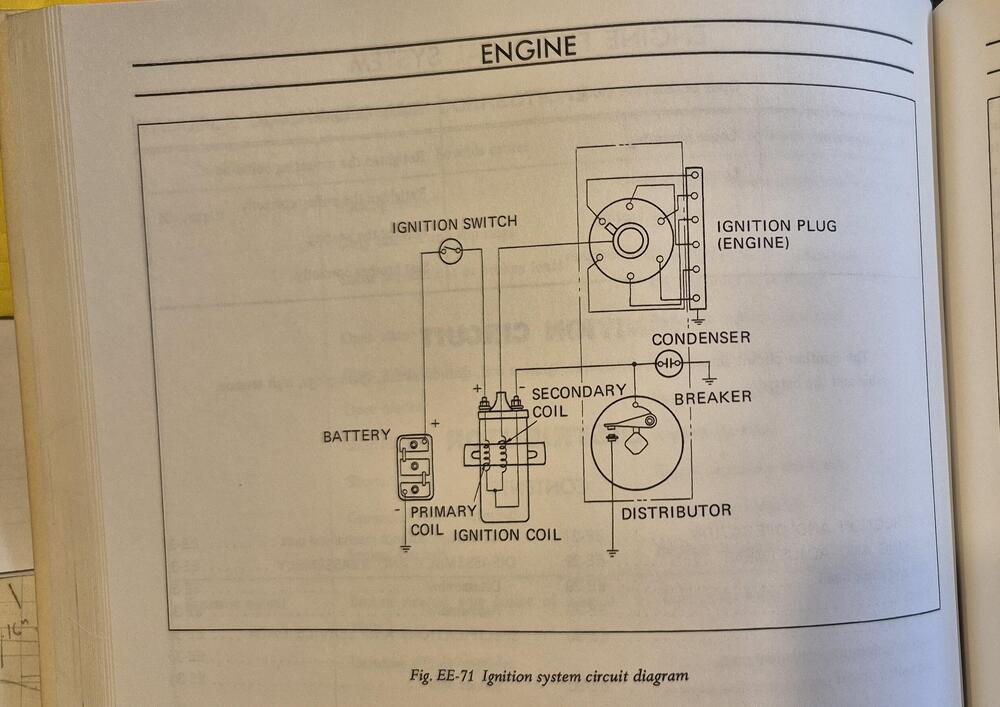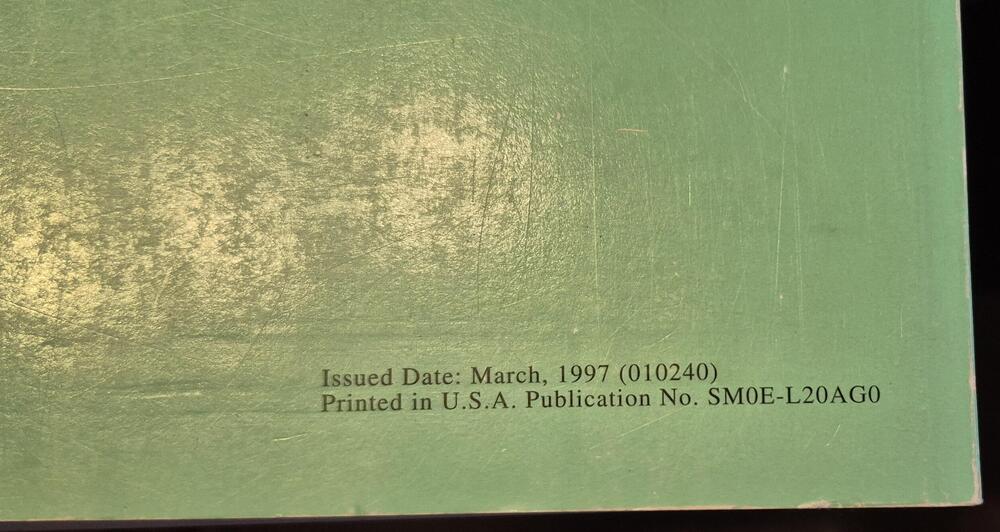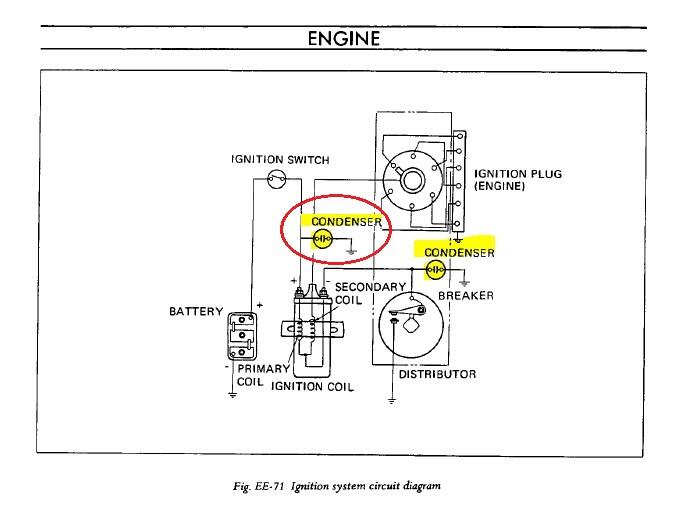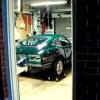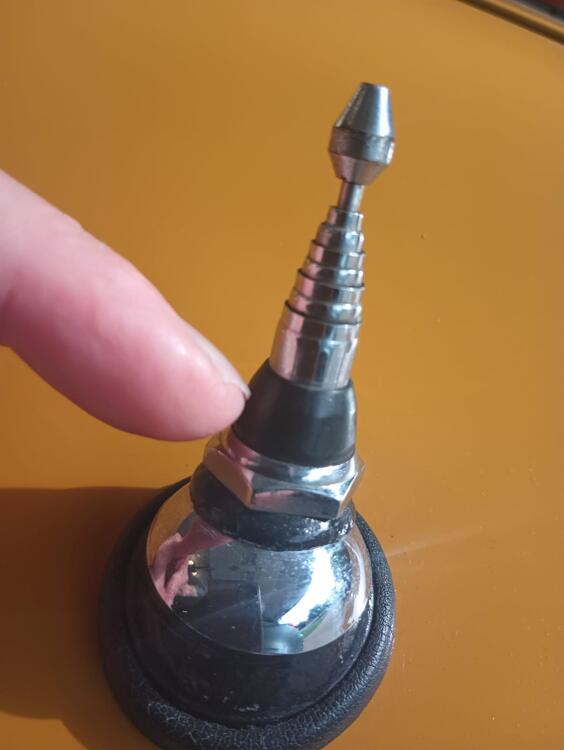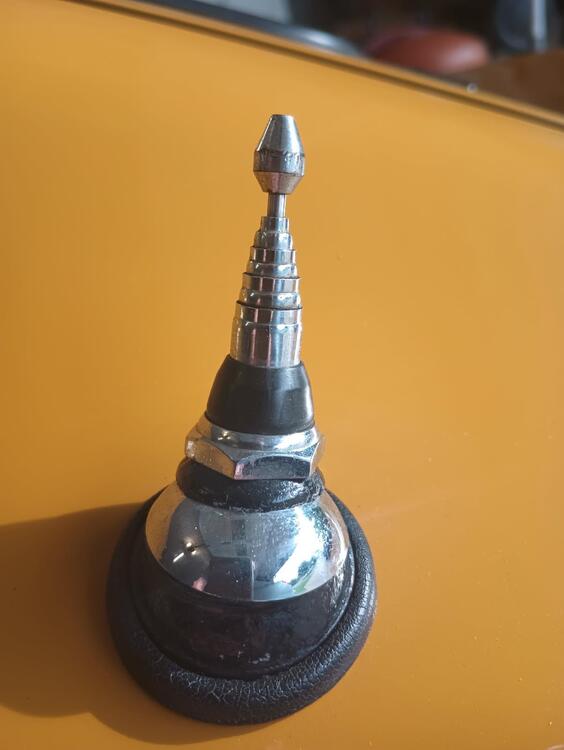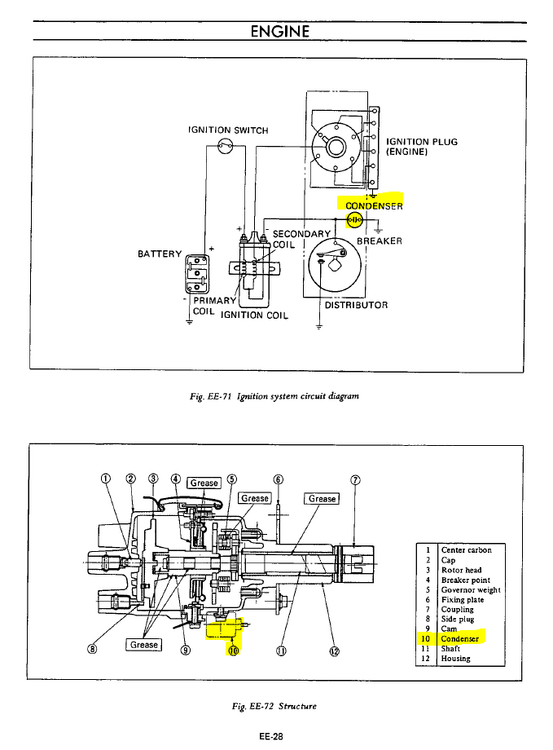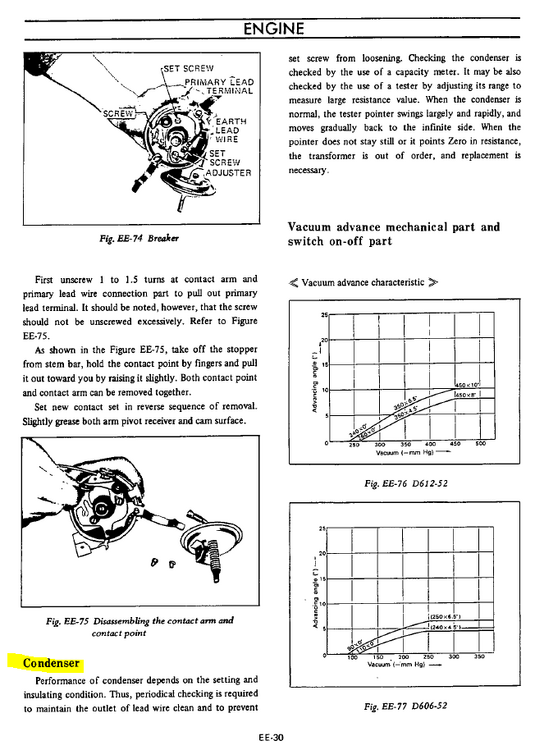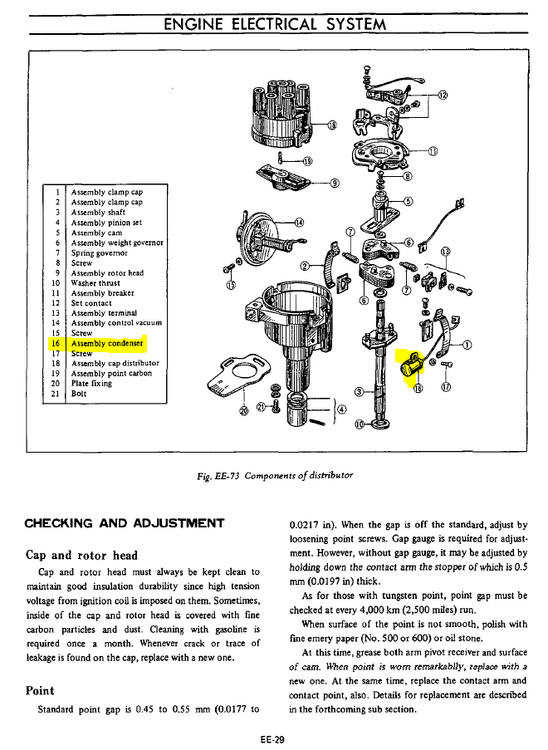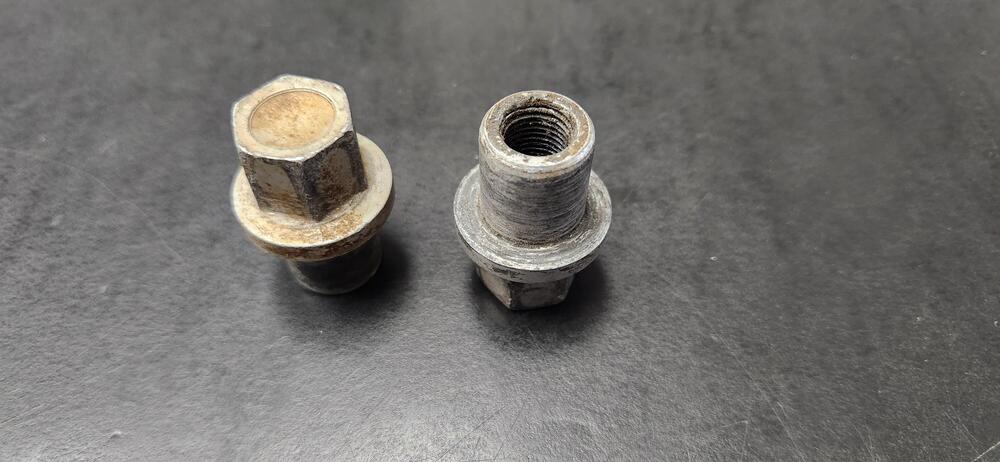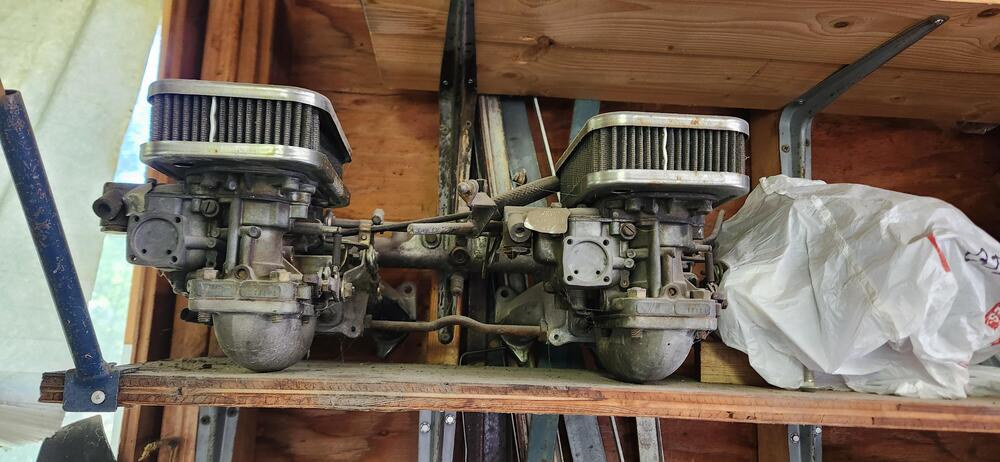All Activity
- Past hour
-
1970 Wiring Diagram
Yeah, weird. Another example of the original wiring diagram for the early cars falling short of accurate. The whole reason I started this journey! And I think I'm approaching the end. The mistakes being uncovered up are becoming less severe and less frequent. I'll have the new rev out soon. Changes to the horn system, some power distribution stuff (grounding scheme), and of course, the condensers.
-
Minilite lug bolts and dual weber setup
Cool. And those wheels did clean up nice!
-
Charging fun with Zedyone !
I pulled the alternator this morning (wearing my osha white safety socks - those who have followed my Z build will understand) and plan on taking it to get tested this afternoon. None of my connections were lose or corroded. No matter what I do the amperage never changes or moves with revs and the battery will NOT read more than 12.3 volts.
-
Minilite lug bolts and dual weber setup
They are really aluminum. My 911 has factory aluminum lug nuts. They are a bit of a pain as you need a cushioned socket to keep from damaging them and no air tool, ever. They cleaned up pretty good. I may get them polished and checked for roundness.
-
1970 Wiring Diagram
You're welcome. This is strange indeed. The images I posted came from a parts book CD I purchased from Courtesy Nissan about 15 years ago. When I picked up #957 last year it came with a two volume original 1970 FSM set. The body and chassis volume is dated November 1, 1969. Strangely the L20A, L24 engine volume is not dated, but it does show the early version of the EE-71 diagram with only one condenser and no mention of other engine electrical condensers. With #957 I also got one of the 1997 reprints (for the N.A. Vintage Zed program) of a 1970 FSM as a single volume. Even that one shows only the one condenser in the EE section.
- Today
-
Minilite lug bolts and dual weber setup
Are the lug nuts really aluminum? Really? Was that a thing paired with really light wheels? I would use those on the track and check them often, but sounds sketchy to run aluminum nuts on the street.
-
1977 280z clock issue #xx of yy
Fingers crossed! So the old dead cap either went open circuit, or shorted internally. That style of cap (known as an aluminum electrolytic) has been known to go either way. If it went short, the clock wouldn't run at all. If it went totally open, the clock might work, or might not. Sounds like yours did just that. Hope you're good from here! Too bad about the other clock though. Probably nothing can be done with that one unless you find NOS of the xtal and/or the control chip.
-
1970 Wiring Diagram
Thanks for the help. I have an incomplete version of the 1970 FSM, but I've been through the EE section. It don't think it shows all the condensers. For example, the circuit diagram you posted only showed the condenser mounted on the distributor. They didn't include the one on the coil attached to the positive side (crudely grafted onto the the diagram below): And they didn't show how the tach connects! At least not until 1972, and it was still cryptic then!
-
fainghennery joined the community
-
Still struggling with car at idle after 8 years
The 240Z engine is a remarkably simple and well-built device... except for the emissions control system. The latter is a train-wreck, typical of the auto industry's late-1960's, analogue-era, pre-ECU/fuel injection, band-aid solutions. The problem was not unique to Nissan. Whether it was the USA, the UK, Italy, France, Japan -- they were universally bad. Why? Because the technology available to the industry that was 'ready for prime time' (i.e. wouldn't get the manufacturer sued for incompetence) was nothing better than a lash-up. In the end, the only answer proved to be a combination of electronic fuel injection + computer control. It took almost 10 years to get there. In Panama, you are re-living the 1970 Los Angeles nightmare -- high temperatures + traffic jams + complicated, ineffective smog equipment technology. Plus -- as I mentioned in an earlier post -- the pssibility that your local gas may be substandard. My advice: 1) Remove all of the emission control equipment; 2) Run the tank dry and then fill up at the biggest, brand-name gas station in downtown; 3) Place your trust in a top-quality auto shop that has a lead mechanic who has proven credentials with carburetors (preferably SU carburetors); 4) Only if steps 1, 2 and 3 can't get the engine running properly should you consider removing the cylinder head.
-
Yarb started following 240Z Antenna Acorn Nut
-
240Z Antenna Acorn Nut
Fortunate to find an early antenna with the bullet tip. The Nut wasn’t available. Any help will be much appreciated.
- Yesterday
-
1970 Wiring Diagram
@Captain Obvious Check out the engine electrical section of the L24 engine FSM for info on the distributor condenser, page EE-28, 29, 30. There is a circuit diagram and other info.
-
emccallum started following Minilite lug bolts and dual weber setup
-
Minilite lug bolts and dual weber setup
I picked up an old (1973) set of minilte 14" wheels. They are in ok shape but the guy only had 13 lug nuts. The lugnuts are very light (aluminum) and fit the wheels. Has anyone ever seen lugs like these? I found a minilite website and I plan on contacting them, but thought I would ask here too. I think it would be nice to have this style lug nut. The guy also had this dual weber setup. If anyone is interested, let me know. The guy is local, super nice, and is trying to get rid of some old stuff. I have no interest in it but happy to help if someone needs it.
-
[2025] What Did You Do To/with Your Z Today?
I hope you strapped them down to the headlight scoop for the drive, although I think you'll need to wait a while before opening them.
-
Charging fun with Zedyone !
My .02 cents on new alternators. Have it tested before you leave the parts store. I bought one and it blew the glass fuses, maybe not all of them but the car wouldn't crank and my gauges went limp. Ask the guys on here and found out it was "back charging"? Guys at the store were cocky but got alot nicer after it failed their test. Learned something new that day. 🙃
-
Charging fun with Zedyone !
I will report back to what I am getting out of these wires later this evening. I will also double check the connections and clean all terminals carefully. I will inspect all wires for fraying and damage. I may have a spare MSA alternator in my parts bin. I could just swap that in to see if I get a different result. Car has never really had any real electrical issue since I purchased it in 2008. Had a light stalk issue once, but that turned out to be a bad connection that Dave helped me troubleshoot. Good times.
- Charging fun with Zedyone !
-
Charging fun with Zedyone !
I don't know 1971 but on a 1976 the charge lamp lights when the key is turned on aa a circuit and bulb check. It grounds through the alternator edit- external regulator then turns off when charging exceeds battery voltage. It should be battery voltage with the key on and the plug unplugged.
- Charging fun with Zedyone !
-
Check out this ATK crate L28 engine on BaT
Thanks, and that is interesting. Google Translate serves its purpose well. Is there a Japanese Wikipedia? Any thoughts on where that "new" N42 casting comes/came from? There is a disconnect between ATK Vege (which seems to be a combined company, looking at the logos and the descriptions) and the KSS that comes up through that Japanese ATK link. 1936 versus 2003. North America versus Japan. From the web pages - https://atkvege.com/about-atkvege/ About ATKVegeATK North America is the largest private label Crate Engine Remanufacturer in North America. Partnered with our sister company, VEGE de Mexico, ATK VEGE has a history of Remanufacturing that dates back to 1936. https://atk.co.jp/company/ name KSS Co., Ltd. Representative President and CEO Keiji Okawa Established August 2003 Capital 3 million yen
-
HS30-H started following Check out this ATK crate L28 engine on BaT
-
Check out this ATK crate L28 engine on BaT
Japanese company. Try searching in Japanese: https://atk.co.jp/rebuild/
- Charging fun with Zedyone !
-
SteveJ started following Charging fun with Zedyone !
- Charging fun with Zedyone !
- Charging fun with Zedyone !
-
historicauto joined the community
-
Check out this ATK crate L28 engine on BaT
I think that the poor painting is probably becuase they are rebuilt engines. It's interesting that there is so little on the WORLD WIDE WEB OF DATA about ATK. Not even a Wikipedia blurb. https://atkvege.com/about-atkvege/ https://www.lkqcorp.com/?s=atk https://www.lkqcorp.com/blog/2011/12/14/atk-vege-engines-yamato/
- Charging fun with Zedyone !






